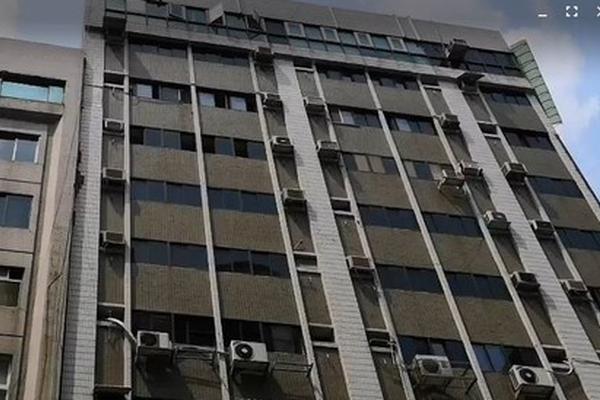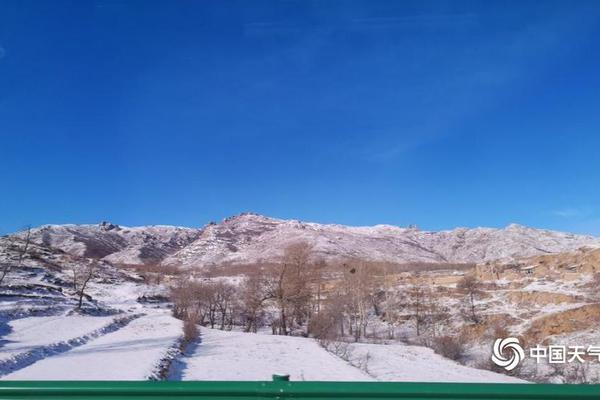
Geographic information system is mainly composed of five parts: hardware equipment; GIS software; geographical data; GIS personnel; application model.
Geographic information system is the intersection of multiple disciplines such as computer science, geography, surveying and cartography. It is a computer technology based on a geospatial database and uses geographical model analysis methods to provide a variety of spatial and dynamic geographical information in real time to serve geographical research and geographical decision-making. System.
○4 Spatial geographic data management is supported by the computer system, and conventional or specialized geographical analysis methods are simulated by computer programs, acting on spatial data, generating useful information, and completing tasks that are difficult for human beings to complete.
It is a technical system that collects, stores, manages, calculates, analyzes, displays and describes the relevant geographical distribution data in the entire or part of the earth's surface (including the atmosphere) space with the support of computer hardware and software systems.
Introduction: Geographic Information System (GIS) is a data management system with a professional form of information system space. Strictly speaking, this is a computer system that centralizes, stores, operates, and displays geographical reference information. For example, the data is identified according to its location in the database.
A practical geographical letterThe system should support functions such as spatial data acquisition, management, processing, analysis, modeling and display. Its basic components include the following four main parts: system hardware, system software, database system, system management and operators.
Computer hardware system Computer hardware system is a general term for actual physical devices in computer systems. It can be electronic, electrical, magnetic, mechanical and light components or devices, and is the physical shell of GIS. 2 Computer software system Computer software system refers to various necessary programs.
It is mainly composed of three parts: satellite constellation (space part), ground monitoring system (ground control part) and signal receiving system (user part), which can provide users with precise three-dimensional coordinates, speed and time. It is suitable for land, ocean, aviation and aerospace, and has global, all-weather, The characteristics of continuity and real-time.

1. GIS software is the core of the system , various operations used to perform GIS functions, including data input, processing, database management, spatial analysis and graphical user interface, etc. According to their functions, they are divided intoGIS professional software, database software and system management software, etc., as shown in Figure 10-4.
2. Personnel are the most important components of GIS. Developers must define various tasks executed in GIS and develop processing programs. Skilled operators can usually overcome the shortcomings of GIS software functions, but the opposite is not true.
3. The hardware configuration of GIS generally includes four parts: computer host, data input device, data storage device and data output device.
4. Geographic information system consists of five parts: hardware, software, data, personnel and methods. Hardware and software provide an environment for the construction of geographic information systems; data is an important content of GIS; methods provide solutions for GIS construction;Personnel are the key and active factors in system construction, which directly affect and coordinate several other components.
5. Geographic information system is composed of computer hardware system, computer software system, geospatial data and personnel. Geographic information system is sometimes called "geological information system". It is a specific and very important spatial information system.
Computer hardware system Computer hardware system is a general term for the actual physical device in the computer system, which can be electronic The, electrical, magnetic, mechanical and optical components or devices are the physical shells of GIS. 2 Computer software system Computer software system refers to various necessary programs.
Geographic information system mainly consists of five parts: hardware equipment; GIS software; geographical data; GIS personnel; application models.
A complete geographic information system is mainly composed of spatial data, system hardware and system software, which mainly applies technologies such as data acquisition, projection and coordinate system conversion, data modeling, spatial analysis, data display and data operation.
Geographic information system is composed of computer hardware system, computer software system, geospatial data and personnel. Geographic information system is sometimes called "geological information system". It is a specific and very important spatial information system.
Trade data for transshipment analysis-APP, download it now, new users will receive a novice gift pack.
Geographic information system is mainly composed of five parts: hardware equipment; GIS software; geographical data; GIS personnel; application model.
Geographic information system is the intersection of multiple disciplines such as computer science, geography, surveying and cartography. It is a computer technology based on a geospatial database and uses geographical model analysis methods to provide a variety of spatial and dynamic geographical information in real time to serve geographical research and geographical decision-making. System.
○4 Spatial geographic data management is supported by the computer system, and conventional or specialized geographical analysis methods are simulated by computer programs, acting on spatial data, generating useful information, and completing tasks that are difficult for human beings to complete.
It is a technical system that collects, stores, manages, calculates, analyzes, displays and describes the relevant geographical distribution data in the entire or part of the earth's surface (including the atmosphere) space with the support of computer hardware and software systems.
Introduction: Geographic Information System (GIS) is a data management system with a professional form of information system space. Strictly speaking, this is a computer system that centralizes, stores, operates, and displays geographical reference information. For example, the data is identified according to its location in the database.
A practical geographical letterThe system should support functions such as spatial data acquisition, management, processing, analysis, modeling and display. Its basic components include the following four main parts: system hardware, system software, database system, system management and operators.
Computer hardware system Computer hardware system is a general term for actual physical devices in computer systems. It can be electronic, electrical, magnetic, mechanical and light components or devices, and is the physical shell of GIS. 2 Computer software system Computer software system refers to various necessary programs.
It is mainly composed of three parts: satellite constellation (space part), ground monitoring system (ground control part) and signal receiving system (user part), which can provide users with precise three-dimensional coordinates, speed and time. It is suitable for land, ocean, aviation and aerospace, and has global, all-weather, The characteristics of continuity and real-time.

1. GIS software is the core of the system , various operations used to perform GIS functions, including data input, processing, database management, spatial analysis and graphical user interface, etc. According to their functions, they are divided intoGIS professional software, database software and system management software, etc., as shown in Figure 10-4.
2. Personnel are the most important components of GIS. Developers must define various tasks executed in GIS and develop processing programs. Skilled operators can usually overcome the shortcomings of GIS software functions, but the opposite is not true.
3. The hardware configuration of GIS generally includes four parts: computer host, data input device, data storage device and data output device.
4. Geographic information system consists of five parts: hardware, software, data, personnel and methods. Hardware and software provide an environment for the construction of geographic information systems; data is an important content of GIS; methods provide solutions for GIS construction;Personnel are the key and active factors in system construction, which directly affect and coordinate several other components.
5. Geographic information system is composed of computer hardware system, computer software system, geospatial data and personnel. Geographic information system is sometimes called "geological information system". It is a specific and very important spatial information system.
Computer hardware system Computer hardware system is a general term for the actual physical device in the computer system, which can be electronic The, electrical, magnetic, mechanical and optical components or devices are the physical shells of GIS. 2 Computer software system Computer software system refers to various necessary programs.
Geographic information system mainly consists of five parts: hardware equipment; GIS software; geographical data; GIS personnel; application models.
A complete geographic information system is mainly composed of spatial data, system hardware and system software, which mainly applies technologies such as data acquisition, projection and coordinate system conversion, data modeling, spatial analysis, data display and data operation.
Geographic information system is composed of computer hardware system, computer software system, geospatial data and personnel. Geographic information system is sometimes called "geological information system". It is a specific and very important spatial information system.
HS code verification for exporters
author: 2024-12-23 22:44How to manage trade credit risks
author: 2024-12-23 22:34HS code indexing for procurement catalogs
author: 2024-12-23 22:13Global trade intelligence whitepapers
author: 2024-12-23 21:36Trade intelligence for marine cargo
author: 2024-12-23 21:18How to track compliance breaches
author: 2024-12-23 22:21How to navigate non-tariff barriers
author: 2024-12-23 21:10How to comply with country-specific tariffs
author: 2024-12-23 21:00 HS code-focused compliance audits
HS code-focused compliance audits
962.74MB
Check How to use trade data for pricing strategy
How to use trade data for pricing strategy
741.59MB
Check Steel pipes (HS code ) trade insights
Steel pipes (HS code ) trade insights
185.57MB
Check Gourmet foods HS code classification
Gourmet foods HS code classification
475.91MB
Check HS code utilization in bonded warehouses
HS code utilization in bonded warehouses
926.39MB
Check global trade management
global trade management
622.32MB
Check HS code electrical machinery data
HS code electrical machinery data
713.99MB
Check Customs data verification services
Customs data verification services
947.84MB
Check HS code-driven import quality checks
HS code-driven import quality checks
751.95MB
Check Predictive trade infrastructure analysis
Predictive trade infrastructure analysis
967.35MB
Check HS code alignment for halal imports
HS code alignment for halal imports
735.37MB
Check How to choose correct HS code in ASEAN
How to choose correct HS code in ASEAN
751.27MB
Check Data-driven customs paperwork reduction
Data-driven customs paperwork reduction
537.27MB
Check Trade data for route profitability
Trade data for route profitability
211.94MB
Check International trade law reference data
International trade law reference data
435.17MB
Check Maritime insurance via HS code data
Maritime insurance via HS code data
187.23MB
Check Trade data for energy sector
Trade data for energy sector
631.71MB
Check How to comply with origin rules
How to comply with origin rules
731.95MB
Check How to reduce stockouts via trade data
How to reduce stockouts via trade data
991.69MB
Check Soybeans (HS code ) import patterns
Soybeans (HS code ) import patterns
121.12MB
Check Global trade certificate verification
Global trade certificate verification
856.76MB
Check Sawmill products HS code references
Sawmill products HS code references
673.64MB
Check Middle East trade compliance platform
Middle East trade compliance platform
899.48MB
Check How to interpret bill of lading data
How to interpret bill of lading data
439.99MB
Check Industry reports segmented by HS code
Industry reports segmented by HS code
983.68MB
Check Apparel import export statistics
Apparel import export statistics
366.24MB
Check Pharmaceutical intermediates HS code mapping
Pharmaceutical intermediates HS code mapping
689.16MB
Check HS code integration with digital customs forms
HS code integration with digital customs forms
799.11MB
Check Global trade intelligence whitepapers
Global trade intelligence whitepapers
741.91MB
Check How to leverage open-source trade data
How to leverage open-source trade data
629.93MB
Check Supply chain disruption tracking
Supply chain disruption tracking
375.46MB
Check How to manage cross-border complexity
How to manage cross-border complexity
616.27MB
Check Free zone HS code compliance
Free zone HS code compliance
385.81MB
Check Global product lifecycle by HS code
Global product lifecycle by HS code
993.43MB
Check Pharmaceutical trade analytics platform
Pharmaceutical trade analytics platform
644.11MB
Check Country block exemptions by HS code
Country block exemptions by HS code
289.98MB
Check
Scan to install
Trade data for transshipment analysis to discover more
Netizen comments More
2149 How to evaluate supplier reliability
2024-12-23 22:54 recommend
1305 HS code-based vendor qualification
2024-12-23 22:32 recommend
1582 trade data services
2024-12-23 22:13 recommend
2071 How to identify tariff loopholes
2024-12-23 20:55 recommend
2216 Trade data for metal commodities
2024-12-23 20:52 recommend